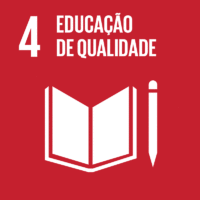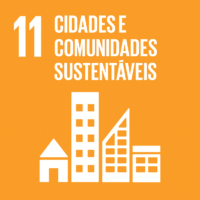Ciência_Iscte
Publicações
Descrição Detalhada da Publicação
International Congress on Cultural Mapping: Linking Heritage (Tangible and Intangible) and Creative Tourism
Ano (publicação definitiva)
2018
Língua
Inglês
País
Portugal
Mais Informação
--
Web of Science®
Scopus
Esta publicação não está indexada na Scopus
Google Scholar
Esta publicação não está indexada no Overton
Abstract/Resumo
In this presentation I will present the research developed lately in ISTAR-IUL regarding the use of digital technologies, namely Augmented Reality (AR), Virtual Reality (VR) and Spatial Augmented Reality (SAR) to explore architecture contents, namely the ones focusing cultural tourism, through several perspectives.
The goal of this research is to combine knowledge from several disciplines, including History of Architecture and the City, Architecture in the broadest sense, Information and Communication Technologies (with an emphasis on Computer Graphics) and Tourism studies. These fields have been integrated in the development of a common base of information on the architecture of cities. In general, the main goals of our research are: i) to create an information system that allows access to digital information useful for the understanding of the built and urban areas; ii) to increase the knowledge about the built environment through the use of more informational media; iii) to collaborate with IT researchers in the development of real VR and AR implementations for the city; iv) to enhance collaboration between education architecture and multimedia students through the use and development of new technologies and processes.
In the book Theorizing Digital Cultural Heritage, Fiona Cameron and Sarah Kenderdine (2007), present a compilation of papers that discuss the mutual transformation that emerging digital technologies and heritage organizations cause on each others due the current trend of combining both. In this line of thinking the research we have been doing contributes to the discussion on the combination between the digital technologies and the elements and places they refer to. Both AR and VR tools have been developed by our team to enhance a better understanding of architecture, namely the cultural heritage, to students and the broad public. All these technologies have been presented in exhibitions on cultural heritage such as the “Escola de Chicago: arranha-céus digitais” exhibition in 2014 at ISCTE-IUL where digital technologies allowed visitors to observe the story of such period in an innovative way. In this exhibition several digital tools developed were presented. Semi-immersive Virtual Reality enabled participants to explore the downtown city of Chicago by navigating in a 3D model (Coroado, Pedro, D’Alpuim, Eloy, & Dias, 2015). Individual buildings representative of the period, as the Old Colony, were presented with an AR app (ARch) that enables users to navigate into these buildings using several functionalities as hide/show parts of the building (Mendonça, 2014). Spatial Augmented Reality was used to augment physical models at the scale 1:10 that were positioned in the exhibition as a complement to the ones digitally presented by AR (Velhinho, 2014). The mobility and ease of use enabled by the augmented reality apps lead us to continuing using this technology for creating solutions of visualization of cultural information targeting tourists. In this scope we developed an app to be used for the augmented visualization of paper maps (ARch4maps) (Gaspar et al., 2016). In this case the Lisbon map of the Prémios Valmor was used and the awarded buildings were mapped by AR in the physical map. SeeARch is a recent AR app developed to be use outside while e.g. a tourist is walking through the city and aims to acquire information on buildings and places. All the developed apps were tested (satisfaction and usability tests) and they use of digital visualization tools proved to be of outmost interest for linking city knowledge and visitors and therefore heritage and cultural tourism.
Agradecimentos/Acknowledgements
--
Palavras-chave
Classificação Fields of Science and Technology
- Ciências da Computação e da Informação - Ciências Naturais
- História e Arqueologia - Humanidades
- Artes - Humanidades
- Outras Humanidades - Humanidades
Registos de financiamentos
| Referência de financiamento | Entidade Financiadora |
|---|---|
| UID/MULTI/0446/2013 | Fundação para a Ciência e a Tecnologia |
Contribuições para os Objetivos do Desenvolvimento Sustentável das Nações Unidas
Com o objetivo de aumentar a investigação direcionada para o cumprimento dos Objetivos do Desenvolvimento Sustentável para 2030 das Nações Unidas, é disponibilizada no Ciência_Iscte a possibilidade de associação, quando aplicável, dos artigos científicos aos Objetivos do Desenvolvimento Sustentável. Estes são os Objetivos do Desenvolvimento Sustentável identificados pelo(s) autor(es) para esta publicação. Para uma informação detalhada dos Objetivos do Desenvolvimento Sustentável, clique aqui.

 English
English



